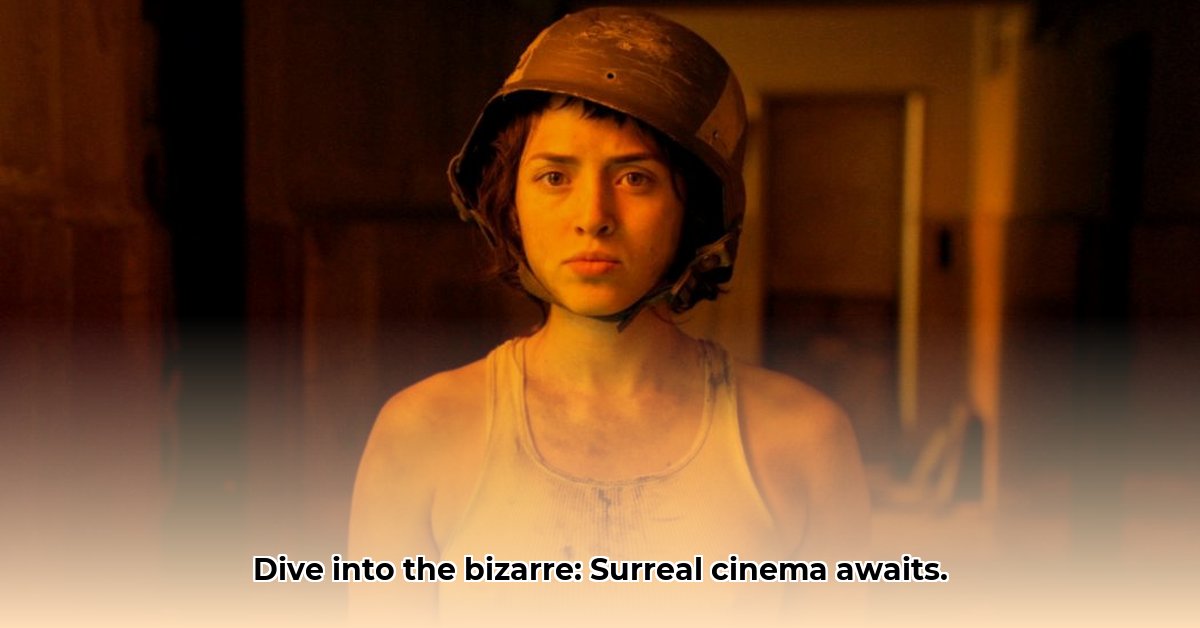
Ever felt the unsettling thrill of watching a film that defies logic, bends reality, and leaves you questioning your own sanity? Welcome to the captivating, often disturbing, world of surrealist cinema. These aren't your typical Hollywood narratives; they're immersive experiences that challenge perception, explore the subconscious, and linger in the mind long after the credits roll. This article delves into the fascinating genre of "weird movies," examining their techniques, impact, and some essential cinematic oddities you absolutely need to experience.
Masters of the Strange: Visionaries of the Weird
Several directors have perfected the art of crafting unsettling yet mesmerizing cinematic masterpieces. David Lynch, often considered the modern king of surreal horror, creates visual poems like Mulholland Drive and Eraserhead that blend dreamlike sequences with psychological thrills. His films are captivating and deeply disturbing, leaving viewers questioning what they have just witnessed. His masterful use of atmosphere and unsettling imagery makes him a true pioneer of modern surrealism.
Luis Buñuel, a true visionary, wasn't just making "weird" films; he was revolutionizing cinema. His classics, including Un Chien Andalou, boldly and shockingly critiqued societal norms. These films were not merely entertaining; they were visceral experiences that challenged audiences and continue to inspire filmmakers today. His daring approach to subject matter and unflinching imagery ensures his lasting legacy.
Alejandro Jodorowsky, a director known for his hallucinatory style, pushed boundaries with films like El Topo, blending religious symbolism and experimental storytelling in a truly unique cinematic brew. His films are intensely personal, violent, and unforgettable, each a bizarre and often deeply personal cinematic adventure.
Unlocking the Secrets: Narrative Tricks of Surrealist Cinema
These films utilize several techniques that set them apart from mainstream cinema. Forget linear narratives; non-linear storytelling, fragmented and dreamlike, reigns supreme. Symbolism is heavily employed, often layered and open to multiple interpretations, encouraging active audience participation in meaning-making. This is not passive consumption; it's actively engaging with the film's often ambiguous messages. Dream logic is frequently used, blurring the lines between reality and fantasy, transporting the viewer to impossible and utterly unique worlds.
The Ripple Effect: Surrealism's Enduring Influence
Surrealist cinema's influence extends far beyond the silver screen. These films have significantly impacted art, literature, and music, sparking conversations about mental health, societal structures, and the human subconscious. Films such as The Cabinet of Dr. Caligari, for instance, continue to resonate with artists and filmmakers, demonstrating the lasting power and enduring relevance of these peculiar cinematic expressions.
A Journey Through the Weird: Must-See Surrealist Films
To fully appreciate the bizarre beauty of surrealist cinema, one must dive in. The following curated list offers a range of films, from critically acclaimed works to hidden gems, showcasing the breadth and depth of this unique genre:
Un Chien Andalou (Luis Buñuel): Groundbreaking for its shocking imagery, dream logic, and symbolic violence, this film redefined surrealist cinema.
Eraserhead (David Lynch): A cornerstone of American surrealist horror, characterized by disturbing visuals, a nonlinear narrative, and its unsettling atmosphere.
Mulholland Drive (David Lynch): A modern masterpiece of psychological surrealism, blurring the lines between reality and fantasy with its dreamlike structure and mysterious plot.
El Topo (Alejandro Jodorowsky): A cult classic, highly influential in independent film, known for its violent imagery, religious symbolism, and experimental style.
The Cabinet of Dr. Caligari (Robert Wiene): An early example of surrealist horror, hugely influential for its expressionist visuals, unreliable narration, and unsettling feel.
The beauty of surrealist cinema lies in its inherent subjectivity. What one viewer finds disturbing, another may find mesmerizing. Embrace the ambiguity, lose yourself in the strangeness, and discover your own favorites! What other cinematic oddities do you believe deserve a spotlight?
How to Analyze Symbolic Imagery in Surrealist Films
Surrealist films often defy easy interpretation. Analyzing their symbolic imagery requires a multi-faceted approach. Understanding the filmmaker's intent and the cultural context is crucial. Lacanian psychoanalysis, with its concepts of the Real, Imaginary, and Symbolic, offers a valuable lens for deciphering the complex symbolism often presented. Recurring motifs and directorial styles reveal overarching themes within the films. However, modern interpretations often diverge from purely Lacanian readings, showcasing the film's lasting power and adaptability to new perspectives. Ultimately, the most rewarding path is to trust your own interpretation and engage with the film's evocative power.